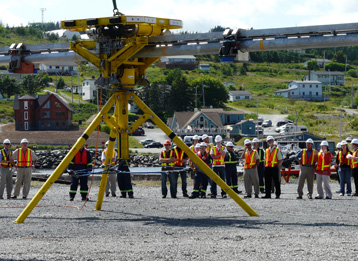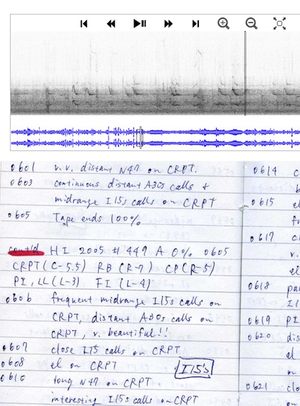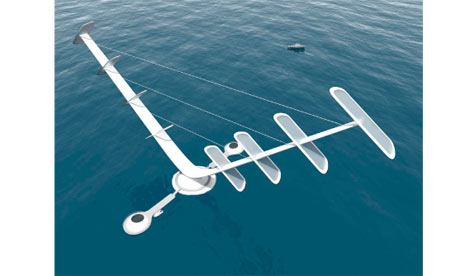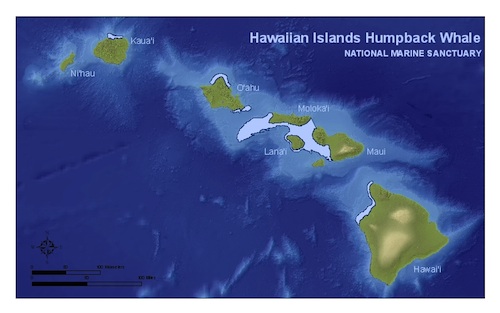Navy enviro mag features beaked whale research, with a slant
Ocean, Science, Sonar Comments Off on Navy enviro mag features beaked whale research, with a slantThe Spring 2010 issue of Currents, the quarterly magazine published by N45, the Navy’s environmental readiness division, features a long article on recent research by Ted Cranford of San Diego State University, which is revealing new details about the anatomy of beaked whales. Cranford has developed an innovative technique to use x-ray CAT scanners designed to scan rocket motors, and with the data garnered there, is working with an expert in Finite Element Modeling (FEM) to model the ways that sound moves through and around the jaws of beaked whales before reaching their ears.
The results are not all that surprising, in a big-picture way: indications are that the whales’ auditory system filters sounds so that frequencies used in communication and echolocation are accentuated, with other frequencies dampened. The frequencies used by mid-frequency active sonar, which are near the low end of beaked whales’ auditory range, are filtered by the sound transmission path, so that they impinge on the ear at levels 6dB or more lower than they arrived at the whale’s jaw.
The article doesn’t specify the sound levels used in the tests, to help us compare these results to what animals experience at sea. However, the captions and text repeatedly frame the results to mean that mid-frequency sonar is “largely filtered out before reaching the ear.” The implication that a 6dB, or even greater, dampening largely removes the signal seems quite misleading; rather, only near the very faintest received levels that would be heard will the dampening render them inaudible. It’s unsurprising that these frequencies are not of inherent interest to the whales, and it’s reassuring that their anatomy may help protect them from direct physiological damage by such sounds. But clear behavioral responses to mid-frequency active sonar signals tell us that they clearly hear them, and respond more dramatically than most others to these sounds. Perhaps these test results could also suggest that beaked whales are especially sensitive to sound in general, or to these sounds at the low end of their audible frequency range; for example, harbor porpoises are well-known to react to quieter sounds than many other species, and recent research has shown that they experience temporary hearing loss (TTS) at lower levels as well. We may be simply learning that when beaked whales are exposed to, say, 160dB sonar signals, their bodies reduce the sound levels to 150dB by the time it reaches their ear–but they still react, even to this reduced sound.
While the new research is fascinating in its own right (and will be even more compelling if ongoing current research validates the modeling being used), it seems that the Navy needs to be careful in how they present the implications. To imply that beaked whales are “largely filtering out” sonar sounds is no more helpful in fostering informed public and scientific dialogue than the perception that mid-frequency sonar is a “death-ray” for whales.
Currents is well worth following. Each issue has a column by the Director or Assistant Director of N45, and about twice a year they run extensive features on various ocean noise topics:
Currents main web site
Spring 2010 feature on Ted Cranford’s research
Winter 2010 feature on Dave Moretti and the Navy’s Marine Mammal Monitoring program, including various tagging programs (Dave raised the “death ray” perception in his interview)
Winter 2009 feature on the Navy’s Marine Mammal Science program







